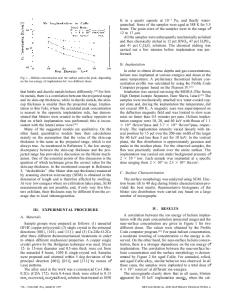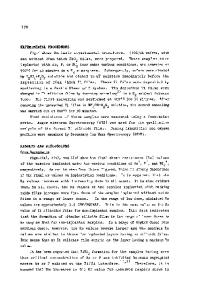On the blister formation in copper alloys due to the helium ion implantation
- PDF / 1,075,717 Bytes
- 8 Pages / 612 x 792 pts (letter) Page_size
- 89 Downloads / 295 Views
I.
INTRODUCTION
STRUCTURAL materials in fusion reactors will be exposed to alpha radiation and helium implantation over a broad range of energies. The interaction between the particles of the fusion reaction by-products and the nearest surface (first wall) of the material structure in which the fusion reaction is carried out causes basic changes in the material and must be taken into account in the long-term design of commercial reactors.[1–4] During the fusion reaction duterium-tritium, particles such as neutrons at 14 MeV and alpha particles bombard the surface. Some of these particles penetrate the first wall, causing significant damage. This damage starts by changes to the material structure and continues by blister formation, exfoliation, and finally, degradation of the surface. Over the last 2 decades, these effects have been studied extensively in numerous laboratories by means of simulated controlled implantation. The objective of this research was to study the metallurgical aspects of the blistering formation in copper alloys and to develop a predictable mechanical behavior model for such effect. II.
BACKGROUND
The deformation and partial exfoliation of surface layers due to hydrogen and/or helium interaction with metals have been the subject of considerable research. Blister formation due to the buildup of ion-implanted gas in the metal has been investigated widely in diverse metals and alloys;[5–17]
D. MORENO, Head, is with the R&D Department, Nuclear Research Center-Neguev, POB 9001, Beer-Sheva, Israel. D. ELIEZER, Professor, is with the Department of Materials Science and Engineering, Ben-Gurion University of the Negev, POB 653, Beer-Sheva, Israel. Manuscript submitted August 9, 1994. METALLURGICAL AND MATERIALS TRANSACTIONS A
however, there is no consensus as to the underlying cause of this phenomenon. Previous models have been based on one of two differing views: first, the concept of a buildup of pressure by agglomeration of gas atoms; and second, the concept of lateral stresses. In both cases, the principal cause is ion penetration into the metal during implantation. Those models based on gas agglomeration assume that blister initiation starts from the creation of a discontinuity in the projected range, defined as the depth from the surface that corresponds to the maximum implanted atoms concentration on the concentration profile. This discontinuity is attributed to the excessive growth of large gas bubbles, caused by either the agglomeration of clusters or by the coalescence of small bubbles.[5,7,18] Growth of large, pressurized gas bubbles causes the transport of residual interstitial atoms by dislocation loop glide toward the surface. Movement of the atoms becomes possible because helium and vacancies coalesce into bubbles and tend to buildup large cavities parallel to the surface. In lateral stress models, blister formation is attributed to the penetration of the gas atoms and the creation of interstitial, vacancies, lattice parameter changes, and a disordered structure near the surface, ca
Data Loading...









